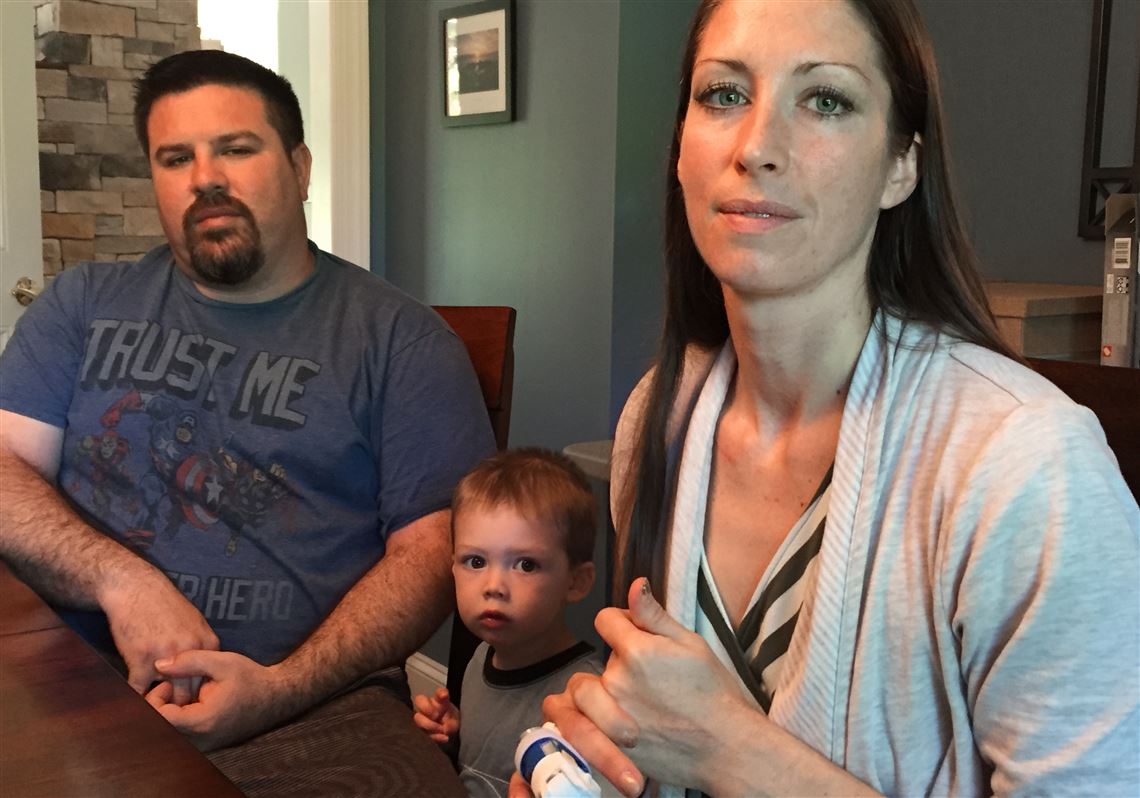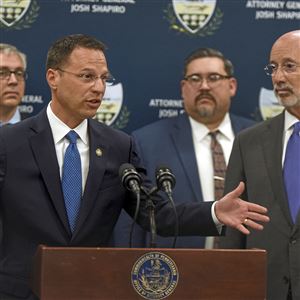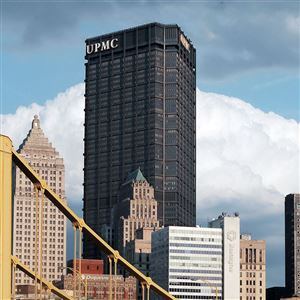Rebecca Himes was making a follow-up doctor’s appointment at UPMC on May 21, a month after being severely hurt in a fall from a horse, when things went awry.
“They said they wanted to see me in eight weeks to see how my bone was healing, which would’ve been July 16,” said Ms. Himes, who lives in Blair County and has Blue Cross Blue Shield health insurance. “The clerk said you have Blue insurance, so we can’t schedule you beyond June 30.”
“We understand,” husband Jarred interjected. “We’ll just pay out of pocket.”
The clerk declined the offer, saying, “We couldn’t do that because that would be insurance fraud,” according to the couple.
Paying cash for medical care isn’t fraud and Ms. Himes was able to book the appointment before the runout of in-network access to UPMC doctors for patients with Blue Cross Blue Shield coverage. But the misunderstanding reflects what can happen as Blue cardholders try to continue medical treatment at UPMC when the Pittsburgh-based health system no longer accepts their insurance.
While UPMC announced recently that Highmark members would be welcomed on an in-network basis at Hillman Cancer Center after June 30, the same is not true for other UPMC hospitals, including Presbyterian in Oakland. Moreover, many other people with Blue cards who need followup care at UPMC after June 30 are having the same kinds of conversations with their doctors.
And even though UPMC dropped plans to require Highmark members with Medicare Advantage coverage to prepay for their treatment, a similar policy has not been announced for commercially insured Blue cardholders.
UPMC spokesman Paul Wood said the insurance fraud claim was “preposterous,” and Ms. Himes, who brushed off the incident, said the office clerk was probably unfamiliar with insurance policy. Still, the matter wasn’t resolved without the frustration of five follow-up phone calls, she said.
“It’s just people not being on the same page,” Ms. Himes said. “I was able to be my own care navigator, but I was really struggling.”
UPMC Altoona Hospital will remain an in-network provider for Highmark insurance members after the consent decrees expire because of an agreement reached between Highmark and UPMC.
But the issue will create a hiccup in the continuity of care in Erie County, where critically injured patients have little choice but UPMC Hamot. After being stabilized, they then face hand-off to a medical facility that knows little about their injury or recovery.
Trauma care as a medical specialty dates to the mid-1960s with the publication of a paper by the National Academy of Sciences that called traumatic injury a national epidemic. The result was the accreditation of hospitals where the equipment, doctors and other medical staff were immediately available to treat such injuries as amputation, brain injury and serious internal bleeding.
Trauma kills an estimated 79,000 people each year in the U.S., more than communicable and infectious diseases combined, according to a National Institutes of Health study. For people under age 65, trauma is the single most important cause of potential years of life lost.
The trauma system has worked: a 2006 study found that, adjusting for differences in injury severity, patients treated at a trauma center had a 25% lower chance of dying than at a non-trauma center.
For Ms. Himes, the fallout from the Highmark-UPMC split began when the 36-year-old mother of three young children was thrown about six feet to the ground as her horse bucked in April — breaking her right clavicle, left wrist and injuring her right ring and pinky fingers.
On the ground, she said she opened her eyes to see a jagged finger bone poking through her skin.
An ambulance rushed her to UPMC Altoona Hospital, Blair County’s only trauma center. She was later taken to a second UPMC trauma center, UPMC Presbyterian in Oakland, for surgery to save her finger.
Not all hospitals are equipped to treat this kind of serious injury.
Specialized continuing care is what Ms. Himes needed. She’s had three operations to reconstruct her finger and stabilize her collar bone with steel plates and screws. More surgery seems likely.
But her Blue Cross Blue Shield health insurance only is accepted at UPMC facilities until June 30 when contractual relations between the health system and rival Blue plans expire.
After numerous phone calls and mixed messages, Ms. Himes was ultimately told that she has to make a downpayment of $200 when she sees her UPMC doctor after the expiration of the consent decrees.
The staff would discuss the cost of her care and treatment plan at that time, she said.
UPMC offered her a 40 percent discount on her bill if paid in advance.
The breakdown in the continuity of care issue is likely to continue for many patients.
In Erie County, where UPMC owns the only accredited trauma center, Highmark and UPMC reached a “stabilize and transfer” policy. It allows Highmark members who are treated at UPMC to be moved when a doctor determines the patient’s condition has stabilized. Fifty Highmark members were treated at UPMC Hamot last year.
Even in the best circumstances, patient handoffs between medical facilities are tricky, experts say. Records can be misplaced, patient allergies missed, care delayed. For trauma patients, the transition can be worse.
Carly Parry, senior advisor, care coordination and transition research initiatives at the Patient Centered Outcome Research Institute, a research funding group based in Washington, D.C., said mistakes happen when patients are moved between medical facilities.
“When you have care fragmentation, patients going multiple places for care, then mistakes happen,” she said. “It matters for medication adherence, it matters for safety. And all of this is very expensive.”
In the meantime, Ms. Himes says her recovery continues, although navigating the medical system has been a challenge.
“It’s like a foreign language,” she said. “It’s just hard, it’s hard.”
But looking at her hand, pleased, she added, “it’s starting to look like a finger again.”
Kris B. Mamula: kmamula@post-gazette.com or 412-263-1699
First Published: June 16, 2019, 3:54 a.m.




















